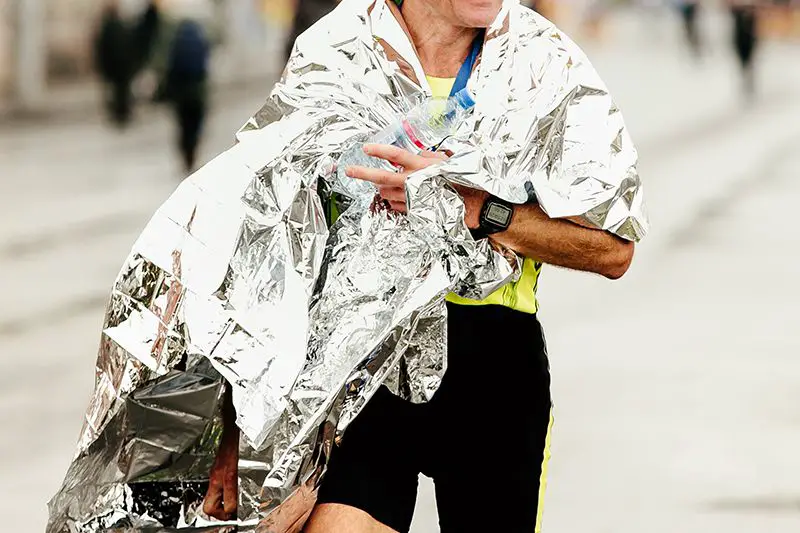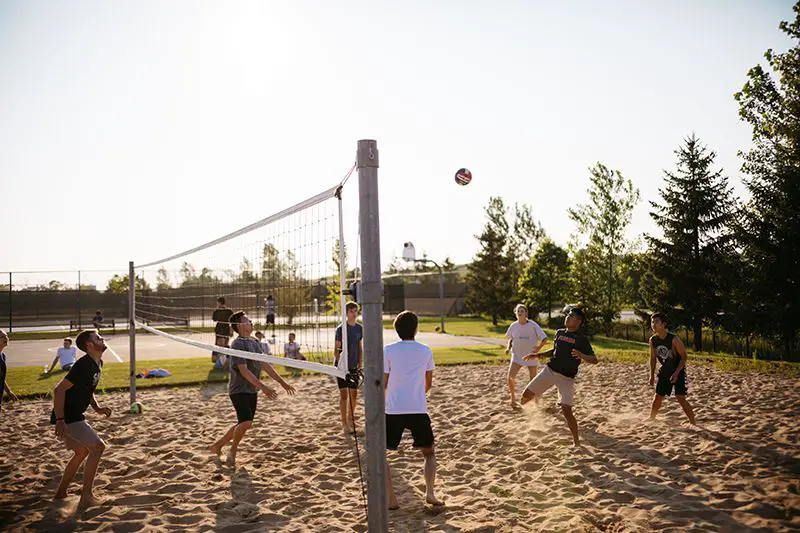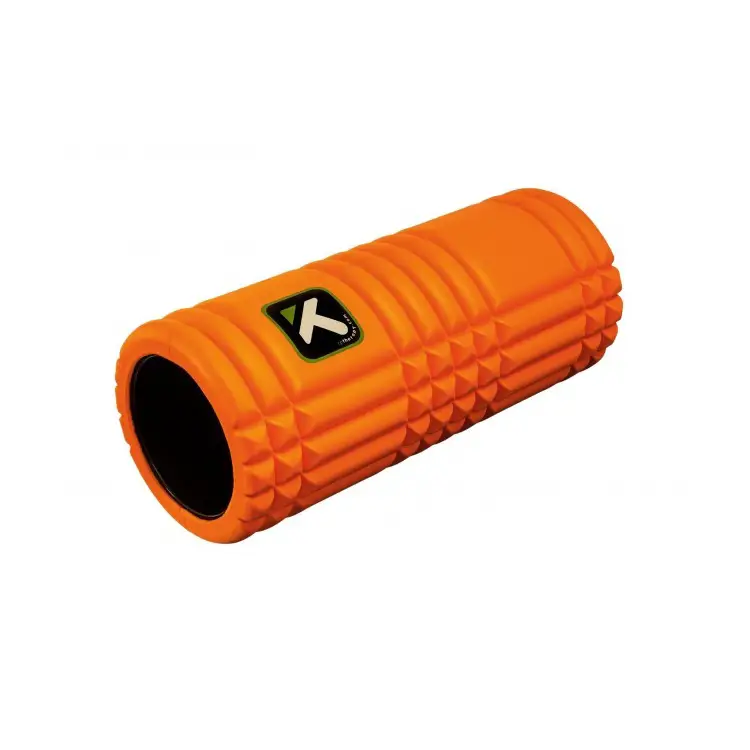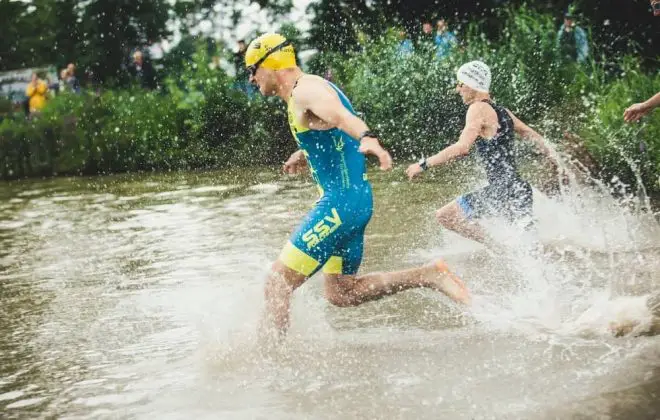Effective Post Race Recovery – 12 Useful Tips To Assist Muscle Repair
Racing, time trials and even hard training sessions can put a lot of stress on the body and cause muscle damage. Depending on what an athlete does during post race recovery period, body’s muscle repair process can be either fast or slow.
Racing is hard both physically and mentally. It requires athletes to reach their maximum capacity and even tap into reserves. I personally know many athletes who think that after such intense efforts they can eat anything (and a lot of it) and then ‘just rest’ doing nothing. Because, you know, they’ve earned it.
As you might have guessed, that’s not the most optimal way to do it…
Immediate post race recovery
So what happens after we push our bodies to the limit?
Well, in response to stress the body releases hormones cortisol and adrenaline. Muscles accumulate massive amounts of lactic acid and hydrogen. During longer efforts also micro tears develop in muscle fibers. On top of that reserves of vitamins, minerals, water and energy are heavily taxed.
Related: How To Measure Post Workout Recovery And Avoid Accumulated Fatigue
The body needs to process and fix all of that to get back into ‘normal state’. So, everything we do during post race recovery impacts how fast the body can be ready to operate at full capacity again.
If we don’t provide what it needs or do something that puts pressure on the body, we only slow that process down.

In this post I’m sharing tips that help me speed up the post race recovery and get the body back to ‘normal’ as quickly as possible.
#1 Do a cool-down immediately after an intense effort
In response to intense efforts muscles build a lot of lactic acid and hydrogen ions that cause muscle fatigue. To speed up the process of clearing these elements from muscles it’s a good idea to continue moving for a while.
Movement stimulates the blood flow that helps to clear up the lactic acid. It also activates mitochondria in the muscles that process hydrogen ions and remove fatigue faster.
The effort of a cool down should be minimal. Even a walk would be enough – the most important thing is to keep moving.
#2 Gently stretch and foam-roll tired muscles
The idea behind stretching is that it helps to lengthen muscles that got tight during the race and, therefore, stimulate the blood flow to clear up the waste products.
Post race stretching should be very short, gentle and with minimum discomfort. After all, muscles have already taken a beating, we don’t want any additional stress. Generally, 5 minutes is enough. If you have a soft foam roller – a couple of rolls will also help to relieve tightness.
#3 Re-hydrate
During the race the body, most probably, has lost a lot of water through sweat, so it’s important to restore that balance as soon as possible.
On a particularly hot day or during a long race the body also loses a lot of sodium through sweat. Decreased level of sodium prevents the body from absorbing the water, so it’s important to replenish that as well.
Consume fruits or something salty after the race to restore sodium levels. Or add an electrolyte tab to your water.
#4 Feed the body what it needs, not what you want
By-products created in the body during intense effort cause the internal environment to become more acidic. Carbon dioxide, hydrogen, lactic acid and stress in general – all promote more acidity and more inflammation in the body.
To speed up the muscle repair and post race recovery it’s important to maintain an alkaline environment in the body.
Alkaline environment minimizes the inflammation that is happening in the body and, therefore, leads to a faster muscle repair and quicker recovery of the nervous system.

Immediately after exercise. Eat something alkalizing after a session or race. Fruits are the best, as they also give the body vitamins and minerals that it craves to ‘calm down’ the whole system. Intense efforts slow down all functions in the body to optimize performance, including digestion. So, after a hard race it’s not a good idea to eat too much anyway.
For me there’s nothing better than a watermelon or a smoothie after a race. These contain a lot of fluids and are highly-alkalizing to minimize inflammation.
Immediately after the race try to avoid sugary, processed, packaged and junk food (like chips, cookies etc.). These contain a lot of processed sugar that promotes inflammation in the body. It’s the last thing the body needs right now.
Within 2 hours of exercise. Eat a balanced meal containing lots of vegetables (to re-stock vitamin reserves) and moderate amount of protein and carbs. After the race we need to replenish muscle glycogen and re-build muscle tissue, so it might be a good idea to limit fat a little.
#5 Get in an ice bath or a cold shower
A great way to speed up muscle repair after a race is by getting into an ice bath for ~10 minutes. Cold reduces inflammation and will, therefore, improve blood flow to the muscles.
If there’s no option to take an ice bath, a cold (as cold as it gets) shower for a couple of minutes will also be immensely helpful.

The Resilient Athlete
A Self-Coaching Guide to Next Level Performance in Sports & Life
Are you aiming to become a resilient athlete who is able to withstand any pressure? Be able to jump on any opportunity? Take any challenge life throws at you head on?
Then this book is for you.
Learn more#6 Put on compression clothes
Putting on compression clothing after the race will help to limit swelling in the muscles, also promoting blood flow. Socks are the most popular choice, but there are also shirts and tights that athletes other than runners and cyclists will appreciate.
#7 Sleep
Sleep is by far the most effective way of speeding up post race recovery. At complete rest our heart rate slows down and blood pressure decreases. That allows our nervous system to relax, muscles to get less tense, so that blood can flow better to muscles and recycle waste.
In fact, our body is able to do any kind of muscle repair only during sleep, thanks to the release of the Human Growth Hormone (HGH). Since the HGH is at its highest towards the end of the sleep (when our body is fasting), make sure you get a solid 8-9 hour sleep after the race to recover faster.
Related: The Power & Science Of Restorative Sleep For Athletes
Don’t eat too much at dinner, as that will impact sleep quality. Try to avoid eating later than 2 hours before bed.

Tips for the days following a race
After you’ve eaten properly and slept it off you can better understand how the body feels. Is there any muscle soreness or tightness that needs to be addressed? Generally, muscle soreness develops within 12 to 24 hours, so you might not feel it straight away after the race.
Take it easy before resuming the training. For longer races it’s a good practice to take a couple of days of complete rest, before easing back into training schedule.
#8 Do a form of mobility work
If there’s no significant muscle soreness, the day after is the time to do something to open up tight muscles. Don’t go bananas, though – too hard of a stretch or too much rolling will cause more damage to the muscle and have an opposite effect.
Yoga is a great way to mobilize and gently stretch your muscles, as well as work on core strength to stabilize the body. It can also be a very powerful meditation tool once you get past the struggle to keep the posture.
I personally like to do 5 to 10 minutes of sun salutation sequences every now and then, which helps me to relieve tightness.
It’s also a good idea to do some easy exercises on opposing muscles and core to counteract the tightness of the major muscles.
Related: 5 Core Exercises For Runners To Get Fast & Stay Injury-Free
#9 Get a deep tissue massage
If it was a particularly hard or long race a deep tissue massage will be a more effective way to open up tight areas and recover the range of motion.
Be careful, though. A strong massage like this can be considered as a workout itself, as it puts a lot of pressure on muscles and joints. Don’t schedule a training session within 24 hours after the massage to let the muscles regenerate.
Self-massage and foam rolling are two great alternatives to a traditional massage.
#10 Go to a sauna
Muscles tend be more flexible and relax in warm temperatures. Going to a sauna is a great way of speeding up post race recovery. For a greater ‘relaxation’ effect jump into cold water right after exiting a sauna or get into a cold shower.
Limit “sauna-sets” to 3-4 and take a day off after the sauna session.
#11 Stay active
Regardless of how beaten up an athlete might feel the days after the race, it’s important to keep moving. That will help him get back into shape quicker.
Movement does wonders for post race recovery. It promotes blood flow to every muscle group, which helps to clear up all by-products faster.
#12 Cross train
Even if an athlete is feeling good in the days following the race, it makes sense to include some form of cross training in the schedule.
Cross training is practicing any sport other than the main one. Doing that forces the body to use muscles in a different way or use completely different muscle groups. This is a good opportunity to relax (both physically and mentally) and develop other areas in the body.
For runners cross-training can be cycling or swimming. For kayakers – running or team sports. Basically, anything you want, as long as you’re not pushing it too hard.
After all, it’s recovery time – we want to stay active, not to add more stress.

Resuming training
If the race was the last one in the season, don’t stress about how quickly you can come back to training. Taking a week or two of complete rest is a good practice that even pro’s use to recover mentally and physically from a demanding season.
Spend some time with your family and friends. Reconnect with your hobbies. Spend more time enjoying life and not focusing on training.
If it was not the last race – resume training in 1-2 days in aerobic mode. My rule of thumb is to not go over Zone 3 in the first week after a race. I limit it to Zones 1 and 2. Sometimes I include intervals of up to 2 minutes in Zone 3 to stimulate mitochondria growth.
Did you find this information useful? Share the post with others using the buttons below.
Andrejs
Related Posts
2 Comments
Leave a Reply Cancel reply
GET A FREE TRAINING PLAN
Subscribe to my email list and get access to a free 4-week “back in shape” training plan
You’ll also get two full-body strength sessions and some other goodies!

How did I get here?
Hey there! My name is Andrejs and I am here to inspire, entertain and get you fit for any adventure.
I went from being an over trained pro athlete to an endurance coach sharing how to listen to your body and live life to the fullest.
Traveling, new sports & activities brought new meaning to my training and made it much more effective, fun and enjoyable. And I'm here to help you do the same.





I’m not sure how promoting an Alkaline environment works within a body that regulates its own PH extremely tightly.
Also, the “alkaline” food you’re eating goes straight into a stomach filled with super corrosive acid anyway – just the way your body likes to make it.
Just like with training intensity we can trigger a more acid environment in the body (ie harder effort causes more H+ ions and more acidity), we can do so with heavy foods. When we reduce that impact, we add less stress to the body and free up resources to work more efficiently